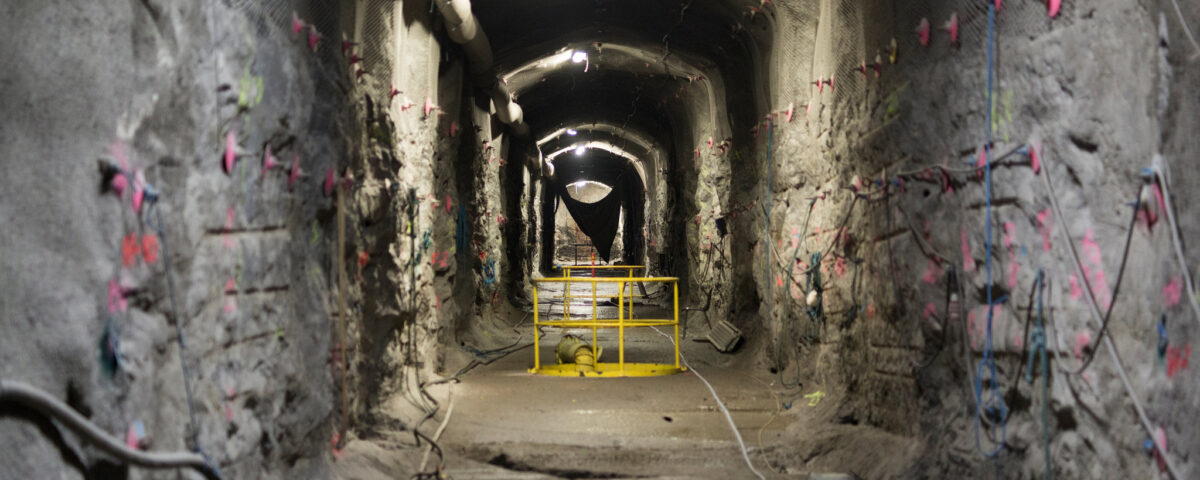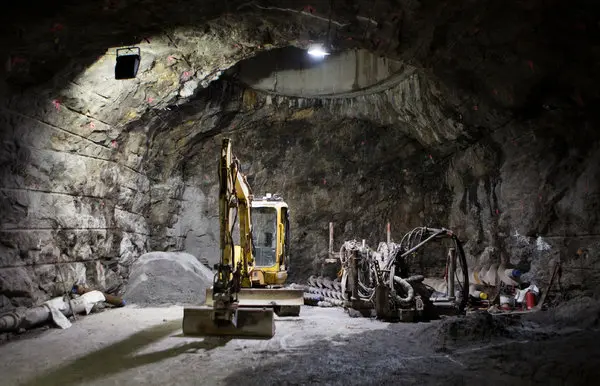
Bangladesh Court issues arrest warrant for former leader Sheikh Hasina.
October 18, 2024Women are encouraged to participate in the NHS survey on periods and menopause
October 19, 2024How do you design a storage facility that can securely contain a Nuclear tomb for millennia

The Solution lies in constructing Geological Disposal Facilities (GDFs), highly specialized underground structures designed to securely contain radioactive waste for as long as 100,000 years.

Nuclear waste remains hazardous for thousands of years, posing a significant challenge: how can we store it securely for millennia? This question drives the construction of geological disposal facilities (GDFs), large underground structures designed to contain nuclear waste safely for up to 100,000 years. These facilities require meticulous planning, robust construction, and long-term sustainability.
In the Champagne region of northeastern France, beneath 450 meters of earth, lies an underground laboratory where the future of nuclear waste disposal is being tested. The environment is stark, with dry air, fluorescent lights, and heavy respirators reminding visitors of the dangers of being this far underground. Navigating through the rocky, criss-crossing tunnels can feel disorienting, but this labyrinth is crucial for scientific experiments and technological innovations related to nuclear waste storage.
This laboratory is part of France’s National Radioactive Waste Agency (Andra), which is seeking a license to build a full-scale GDF adjacent to the tunnels. Such facilities are essential for safely containing intermediate and high-level nuclear waste, the most dangerous byproducts of nuclear energy. GDFs are among the largest underground structures ever planned, with similar projects underway in over 20 countries, including the UK, Sweden, and Finland.
Finland is leading the way, having built the world’s first deep geological disposal facility and begun trial disposal of spent nuclear fuel. Sweden is also advancing, with construction of a GDF set to begin at Forsmark. France is close to finalizing plans for its own facility, Cigeo, while the UK is still in the process of selecting a site.
GDFs are immense, expensive, and controversial. They are designed to store nuclear waste currently housed at surface facilities, such as Sellafield in the UK and La Hague in France. This waste includes reactor components, spent fuel, and byproducts from fuel reprocessing. The design and construction of a GDF is a monumental undertaking, with timelines stretching across decades. Many of the engineers working on these projects will never see them completed.
Licensing alone can take 20 to 30 years, followed by around 100 years of operation before the facility is sealed. Even after sealing, monitoring will continue for centuries. The process begins with identifying a suitable location, which depends heavily on the local geology. Rocks like granite and clay are preferred because of their stability and ability to contain waste. However, finding the right site is not always straightforward. Geological surveys must ensure the site will remain stable for millennia, without risks from aquifers, seismic activity, or future environmental changes.
In some countries, like Sweden and Finland, geological conditions are favorable. Their bedrock has been stable for millions of years, reducing the risk of seismic activity. In other countries, such as the UK, geological uncertainty makes site selection more challenging. In addition to geology, human geography plays a role. Communities must be willing to host a GDF, often enticed by promises of investment and jobs. However, local opposition can arise, especially in areas with a negative history with the nuclear industry.
Storing nuclear waste in disused mines, as Germany did in the past, might seem like an easier solution. However, these mines were not built to the exacting standards required for nuclear waste storage, and their design does not account for the long-term safety measures necessary for high-level radioactive material. GDFs are purpose-built with the precision needed to safely store nuclear waste for thousands of years, taking into account factors like heat generation and physical barriers to radiation leakage.
For example, intermediate-level waste generates less heat and can be stored in large quantities in vaults, while high-level waste produces more heat and must be spaced out. Containers and the surrounding rock provide physical barriers to prevent radiation from escaping, but critics worry that these barriers may fail over time.
The challenge of safely transporting the waste to its underground resting place adds another layer of complexity. Lifts may seem like a convenient option, but there is the risk of a container becoming stuck or falling. A ramp with a gradual slope is a safer alternative, allowing for better control over the waste’s descent.
Countries like Sweden and Finland have collaborated on shared designs, such as the KBS-3 method, which offers a blueprint for GDFs in regions with stable rock formations. In contrast, the UK is still exploring potential geological targets. The long timescales involved in GDF projects also pose a challenge, as technology evolves rapidly, and it is impossible to predict what advancements might occur in the next century. However, engineers must prove that today’s solutions will remain effective far into the future.
To address safety concerns, French engineers have developed systems like a funicular railway to transport waste down a ramp, as well as robots capable of recovering canisters in case of accidents. These innovations are designed to minimize human intervention and ensure the long-term safety of the facility.
As GDFs progress, they represent humanity’s best effort to manage one of its most dangerous legacies. From Sweden’s advanced plans to the UK’s ongoing site selection, the construction of these underground repositories marks a pivotal step in ensuring nuclear waste is safely contained for generations to come.
